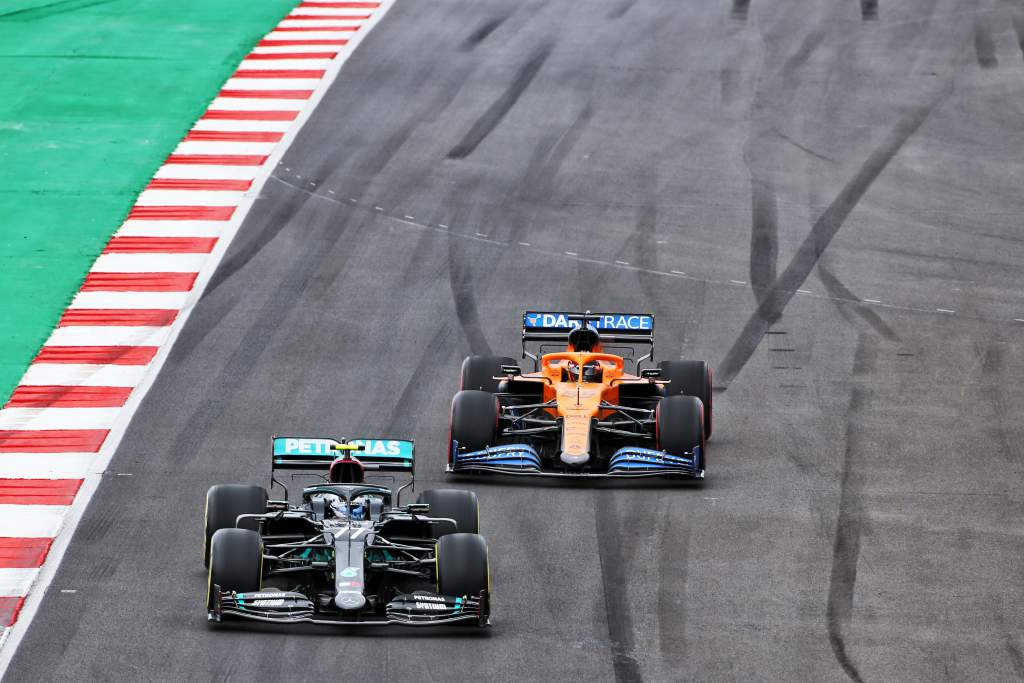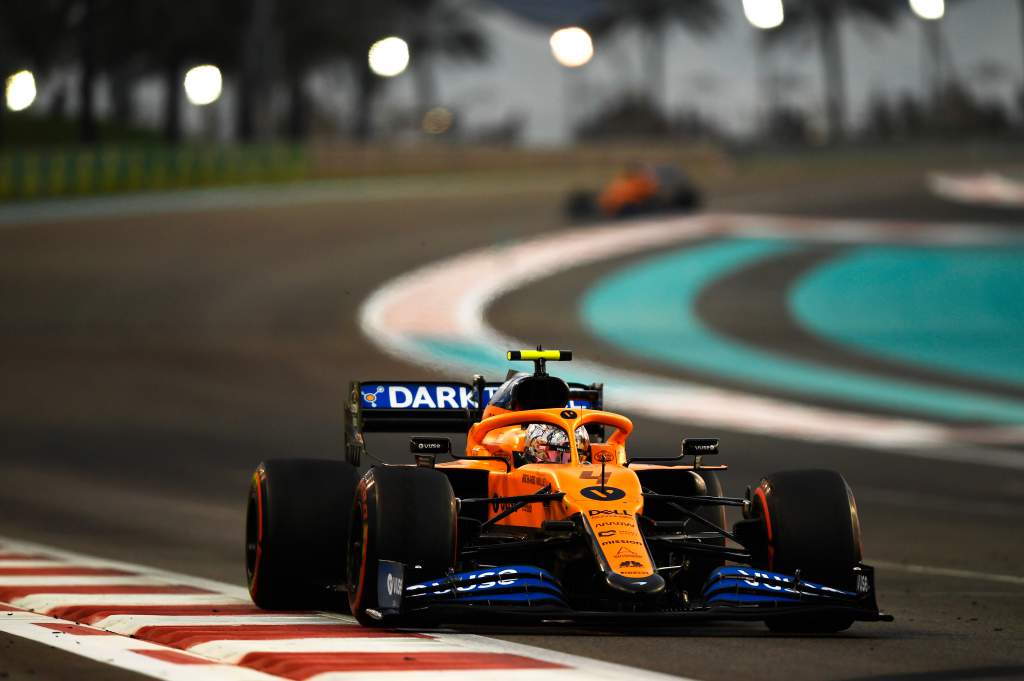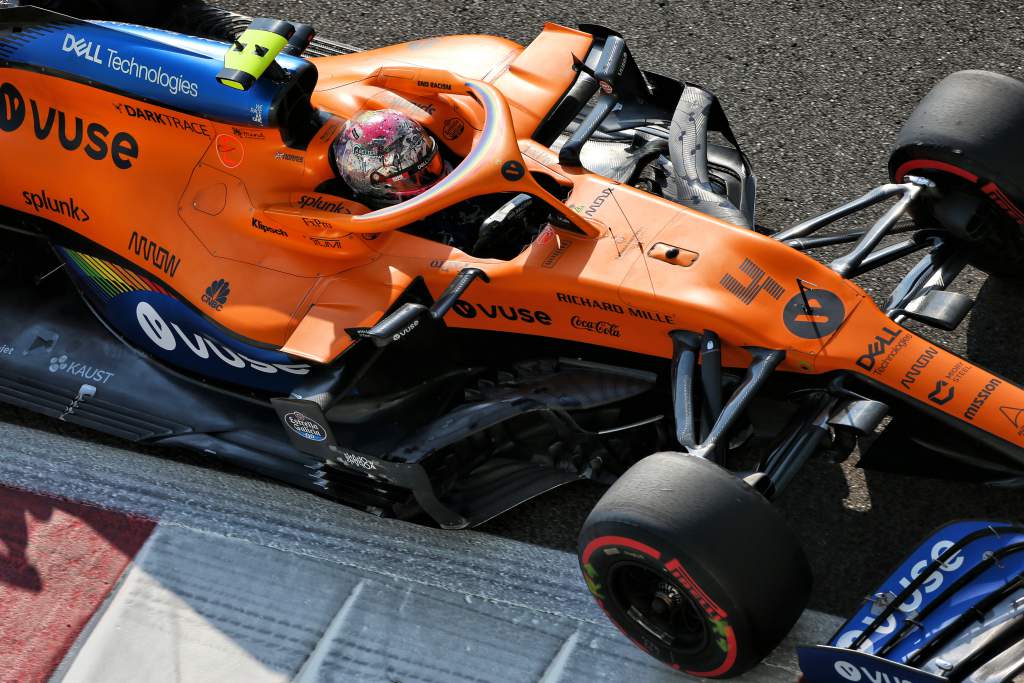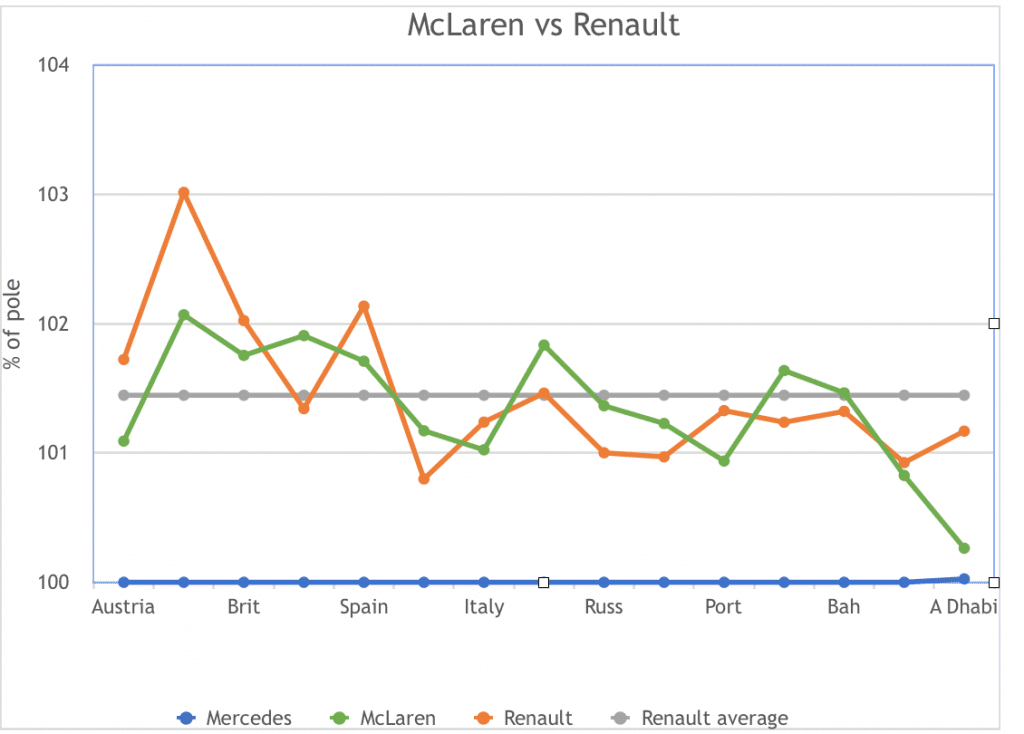Up Next

Given that pre-season team principal Andreas Seidl was making no bones about the areas where McLaren was no longer a top team, it can be considered to have maximised what was at its disposal by its taking that last-gasp third in the constructors’ championship, stolen from under the nose of Racing Point at the 11th hour.
Seidl listed the limitations faced by the team on the eve of the season, thus: “I’m talking about the windtunnel, which we don’t have in-house. I’m talking about the driving simulator, which is outdated, I’m talking about CFD infrastructure which is not up to date anymore, and also about our production infrastructure, which is outdated.”

Formula 1’s budget cap is bringing the spend of the bigger teams down to around McLaren’s current level, but for 2020 it was operating at around 60% of a Mercedes budget.
Its final Renault-powered car, the MCL35, was an update of the 2019 machine, still with the old fashioned-looking wide nose and inboard-loaded front wing but with changes to the tub which allowed a higher-mounted front suspension which in turn facilitated more aggressively proportioned sidepods.
There was also a totally new rear suspension, picking up from a different part of the gearbox, facilitating better mechanical dynamics.
It was quite a benign, sweet-handling machine and this played a big part in drivers Carlos Sainz Jr and Lando Norris inevitably getting something close to the best from it very consistently.
The McLaren was good under braking and would switch its tyres on from cold temperatures more readily than most – this helping Sainz briefly lead in Portugal.
It lacked the ultimate downforce of the Racing Point and had a few peculiarities that could catch it out – such as its sensitivity to wind direction. It really disliked tailwinds or following another car closely but picked up proportionally more from headwinds.
“That’s not a normal way of introducing updates. It was a very rushed process” :: James Key
It was more competitive through medium-high speed bends than slow corners, this quite possibly a function of that wide nose concept – which was addressed with a narrower nose before the September 31 homologation of that component, in readiness for 2021.
This meant introducing the new nose before the package around it had been fully developed. It was introduced on Sainz’s car from Mugello, as Norris stayed with the standard one.
It took a few races to get it working properly, during which time Racing Point and Renault pulled away.
But from the Nurburgring onwards the new nose became the standard spec – and as the car was developed from there, so it began to regain its earlier form.
At the last race of the season Norris qualified a great fourth, closer to the pace than McLaren had been all year. Both Norris and Sainz had qualified third earlier in the season, but with a much bigger deficit to the front.
Technical director James Key talked about the car’s concept at the launch: “The bodywork is following a trend I think we’ve seen increasingly, with a very narrow sidepod, which is quite an exercise in packaging. You have to plan quite early for that sort of thing, because it involves the engine installation and so on.

“We’ve done a similar exercise with the gearbox, to match that philosophy. There’s been a lot of work on rear suspension too, so I suppose from the cockpit backwards there’s a very different approach to what we’ve had before – that’s really where the conceptual side of things was.
“Equally there’s a lot of technologies, let’s say, around the front, which were only possible to do with the new car – we’ve introduced that too. So that’s the new stuff, but having said that it’s all based around, although not entirely based around, what we learned last year. We had what we felt were opportunities we couldn’t do with the 34 with the geometry we had.”
Talking at the end of the season, Key admitted that McLaren had been “only around 50% successful in addressing the previous car’s weak spots. There is still some work to do; there’s nothing fundamental about the car that is preventing us doing that. It’s predominantly aero-related, with some set-up aspects.”
The new slimmer nose – and accompanying tweaked front wing which appeared at Sochi – freed up more potential to fully address those issue.
This was essentially a similar change to that made by Renault in between seasons, but having to be addressed by McLaren mid-season.

“The normal way of working with development parts didn’t apply,” says Key.
“The process was not so considered. We had homologation dates we needed to meet and the nose was a part of that. The narrow nose had to be run and on the car by the end of September.
“That’s not a normal way of introducing updates. It was a very rushed process. In certain areas we were missing something and we back-tracked a bit on certain areas of the development, but the majority stayed.”
When plotted against its closest rival Renault’s performance (see graph below), the three phases of the McLaren season can be seen.
It begins ahead of its rival, falls behind as the forced early switch is made to the narrow nose car as the Renault is still enjoying 2020-specific upgrades, then eases ahead once more as the new spec is developed.

The challenge now will be of maintaining that momentum when dealing with the changes needed to adapt the car around the new Mercedes power unit for ’21.






